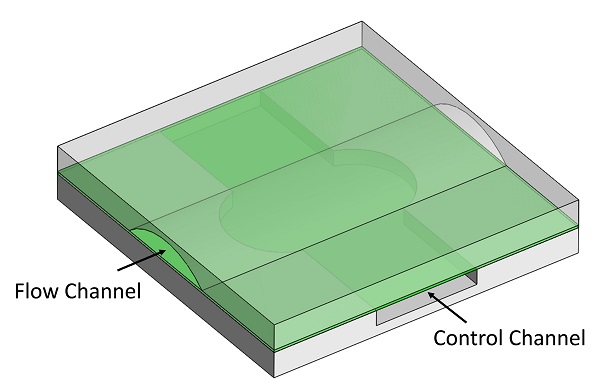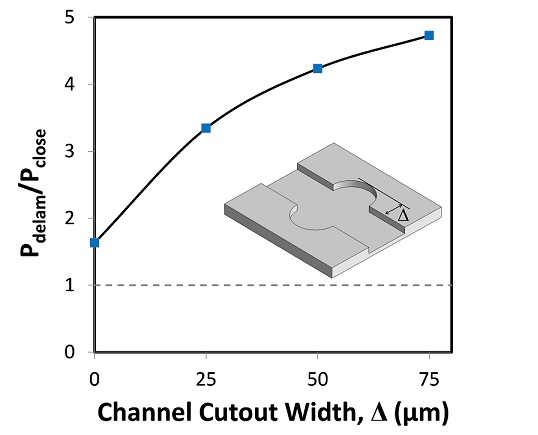Technical Challenge
A commonly encountered failure mode in microfluidic devices is delamination between adjacent device layers. Thus the design of robust microfluidic structures requires not only an analysis of the operating pressures required for device function, but the pressures at which delamination will occur.
One class of components susceptible to delamination is pneumatic valves, which consist of control and flow channels separated by a thin elastomeric membrane, illustrated in Figure 1. Pressurization of the control layer deflects the membrane into the flow channel, closing the valve. This pressurization also results in the development of tensile stress at the interface between the valve membrane and the control channel substrate, which can lead to delamination.
Veryst Solution
Veryst examined the influence of control channel geometry on the actuation and delamination pressures of a pneumatic microfluidic valve using finite element analysis. Adhesion of the valve membrane to the control layer was described using a cohesive zone model.
Figure 2 shows ¼ of a 3D model of the microfluidic valve in (a) the open position and (b) the closed position after the onset of delamination.
The ratio of delamination pressure (Pdelam) to closing pressure (Pclose) predicted by the analysis is plotted in Figure 3 as a function of the control channel offset, Δ (see inset).
As the control channel opening widens, the closing pressure decreases. Simultaneously, increasing the curvature of the control channel edge distributes stress along the interface, increasing the pressure required for delamination. The result is a nearly 200% increase in the ratio of the delamination pressure to the closing pressure of the valve, without modifying the adhesion of the interface, the geometry of the flow channel, or the footprint of the device.


